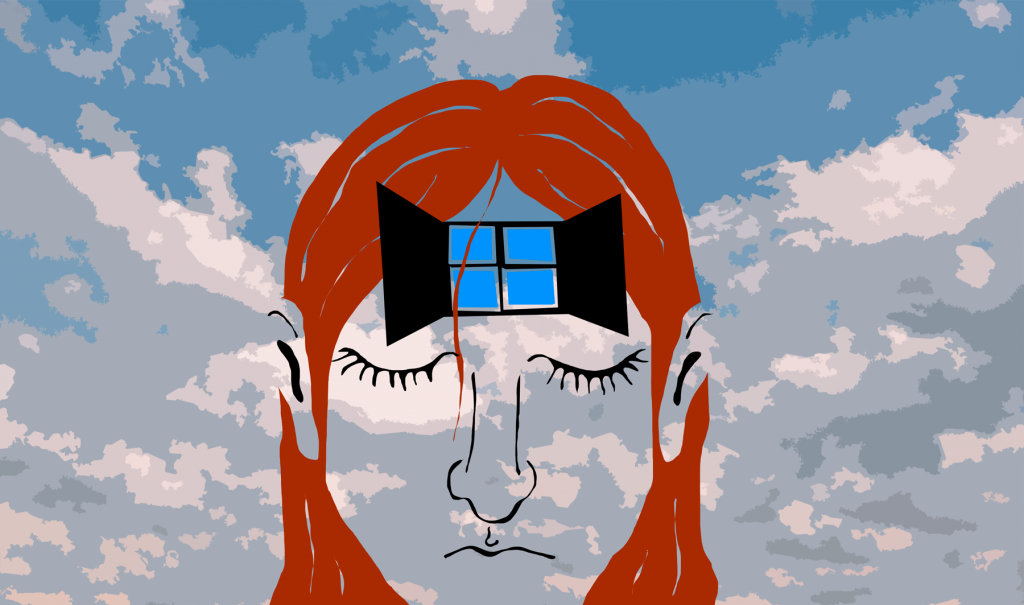This post is also available in Dutch.
How many windows are there in your bedroom? To answer, I am picturing my bedroom in my mind and starting to count those windows. This picturing in one’s mind is called ‘visual imagery’.Researcher Nadine Dijkstra devoted her PhD at the Donders Institute to the question to what extent visual imagery is like perception. Her work shows the two are remarkably similar when looking at the brain. So seeing with your mind’s eyeis very much like seeing with your real eyes. And,more surprisingly, the reverse is also true: when you are seeing with your eyes, you are also imagining things!
Scanning images in your mind takes time
Already in the eighties, cognitive scientists Zenon Physlyshyn and Stephan Kosslyn were in a fiery debate: are mental pictures really like real pictures? Evidence was mounting up in favor of this, with experiments showing that mental images do resemble real images. For instance, when Kosslyn and colleagues asked people to imagine a map of an Island, it took them longer to find a location that was further away from the starting point, much like it would if they were scanning a real map.

In the brain, imaging is like seeing
So what did the now dr. Dijkstra add to this debate? Well, visual imagery and perception may seem alike, but are they also the same when we look at the brain? Her answer: Yes and no. When we process visual information coming in from the eyes, the brain processes this information first in the back of the brain, what we call lower-level brain areas, which deal with the simple features like contours and color. The information then flows up the visual hierarchy to higher-level areas closer to the front of the brain, processing increasingly more complex features such as shape and category. But when imaging that bedroom, there is no information coming in from the eyes! Nonetheless, Dijkstra found overlap between perception and visual imagery in both of these low-level and high-level areas. Also, the more vividly people imagined an image, the stronger this overlap became.

Seeing is also imagining!
But they can’t be exactly the same, right? Picturing that bedroom does not seem as realistic as when you are actually there? Correct! The crucial distinction is the direction of the flow of information. When imaging something, the bottom-up flow of information (i.e., from lower- to higher-level areas) was missing; instead, there was only flow of information in the reverse direction. Interestingly, Dijkstra also found top-down flow (i.e., from higher- to lower-level areas) during perception. So when we are seeing with our eyes, we are also creating mental imagery. Dr. Dijkstra argues that in order to better understand what we are actually seeing, the brain creates mental images based on our prior knowledge to then match these to what our eyes are perceiving. So you are, in fact, perceiving with your eyes and your mind’s eye. Imagine that!
Author: Floortje Bouwkamp
Editor: Marisha Manahova
Translation: Wessel Hieselaar
Editor translation: Jill Naaijen
